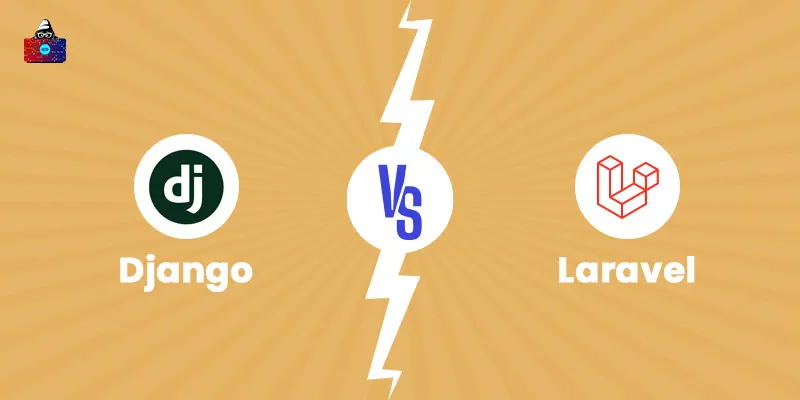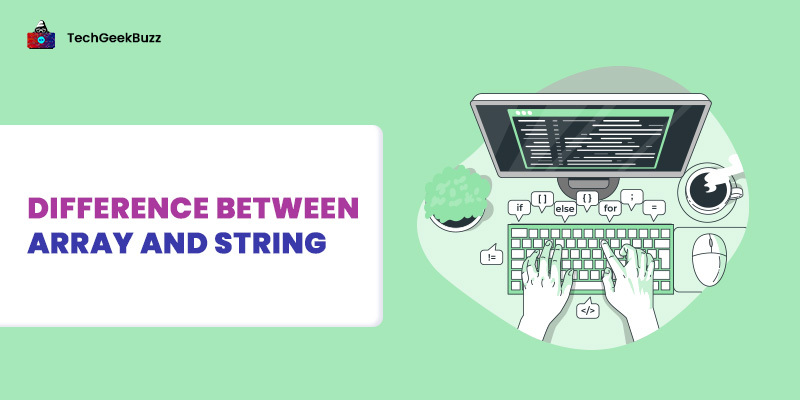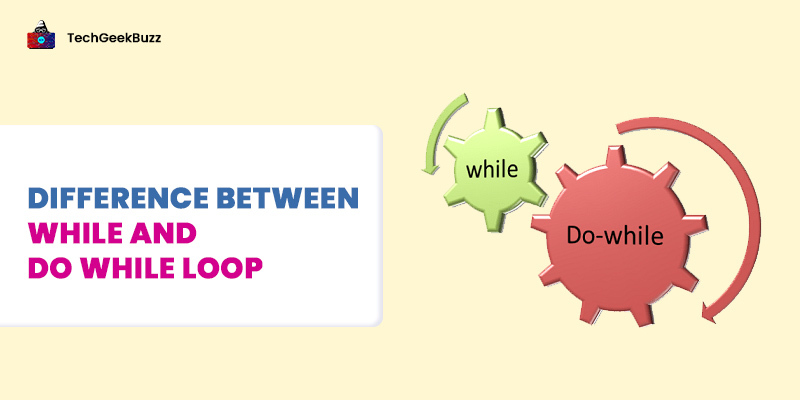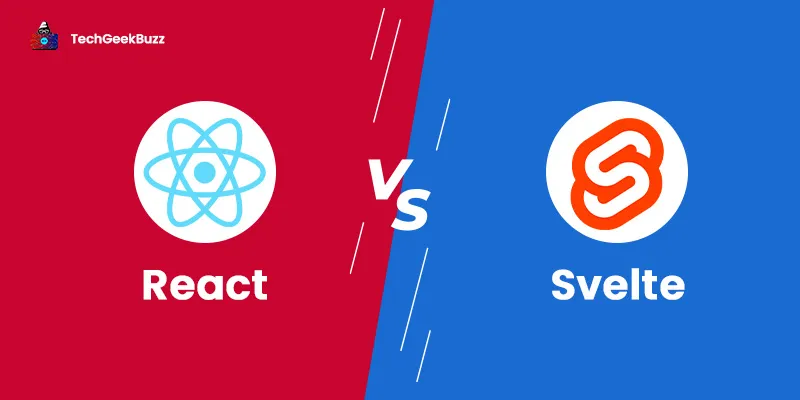A web framework, also known as a web application framework, is a software framework that facilitates the development of web applications, including web services, web APIs, and web resources. It provides a standard for developing and deploying web applications on the World Wide Web.
Django and Laravel are two popular back-end frameworks for web development. They are popular web frameworks that come with excellent features, functionalities, and capabilities that help developers create responsive web applications. While Django is a Python-based web framework, Laravel is a PHP-based web framework.
A framework can make or break your project since it serves as a foundation or works as a skeleton on which you build your application. Therefore, choosing the right back-end framework is of the utmost significance to make your project successful.
This article aims to draw a detailed comparison between Django and Laravel, thus helping you to decide the best back-end framework for your project. Also, you will get an overview of Django and Laravel frameworks, along with their features, advantages, and disadvantages.
So, here it goes!
What is Django ?
Django is the most preferred Python web framework among developers for creating complex database-driven websites. It is an open-source and free web framework that follows the model-template-view (MTV) architectural design pattern. It primarily concentrates on certain design principles, such as low coupling, reusability of components, rapid development, less code, and don’t repeat yourself (DRY).
The primary objective of the Django framework is to ease and fasten the development of complex web applications. This high-level Python framework manages most of the hassle of web development. It eliminates the need for developing everything from scratch and allows you to focus on writing code for a web application’s high-level functionalities.
History
The development of Django started in the fall of 2003 when two web programmers, Adrian Holovaty and Simon Willison, started using the Python language for developing web applications. Later, Kaplan-Moss was involved in the development of Django after Simon Willison.
In July 2005, they released Django publicly under the Free BSD license. This framework got its name after the famous guitarist Django Reinhardt since Adrian Holovaty was a Romani jazz guitar player and a big fan of Django Reinhardt. Later, in 2008, Django Software Foundation (DSF) was formed and announced that it would maintain Django in the future.
Features of Django
The following are the salient features of Django:
- Rapid Development
Django was developed with the aim of providing a framework that cuts down the time for developing web projects.
- Bundled Applications
The Django distribution combines several applications in its ‘contrib’ package that include:
-
-
- An extensible authentication system.
- Tools for generating RSS and Atom syndication feeds.
- Tools for generating Google Sitemaps.
- The dynamic administrative interface.
- A framework for creating GIS applications.
- Built-in migration for various web attacks, including SQL injection, cross-site scripting, and cross-site request forgery.
-
- Extensibility
Django supports more than 2500 packages to extend its original behavior. In addition, it allows developers to plug third-party code into a regular project, provided that it follows the reusable app conventions.
- Server Arrangements
Django can integrate with Apache and NGINX using WSGI and Gunicorn or Cherokee using flup. Moreover, it supports five databases, namely SQLite, MariaDB, PostgreSQL, MySQL, and Oracle. It can also run in conjunction with Jython on any Java EE application servers, such as GlassFish or JBoss.
Advantages of Django
Here are some remarkable benefits of Django:
- Django is a free and open-source web framework that anyone can use to develop Python-based web applications.
- Django is a scalable framework that can handle heavy traffic with millions of users.
- It is a secure framework and provides safety from various attacks, such as SQL injection , cross-site request forgery, and clickjacking.
- The high-level architecture of Django provides easy and quick management of web development, from conceptualization to deployment.
- You can create all types of software using Django, from single-page web applications to social media websites and scientific computing systems.
Disadvantages of Django
Some of the significant drawbacks of Django are:
- It is a heavy-weight web framework that is not ideal for developing small-scale web projects.
- Specifying URLs with regular expressions is a pretty challenging task, at least for beginners.
- It is an opinionated framework, which provides a monolithic feeling.
- Everything is based on Django ORM.
When to Choose Django?
Choosing Django will be a great move if you want to develop projects that involve vast volumes of textual content and media files. In addition, it is an ideal framework for creating eCommerce websites, financial applications, booking software, social media websites, and healthcare software, to name a few. You can leverage the Django framework for the following:
- Development of a web application with ORM support or API backend.
- The rapid development of web applications.
- Deploying an application and scaling it as per your needs.
- Creation of data-driven web applications or websites.
From small startups to large enterprises, use Django to build their web applications and websites. Some giants that use Django for their development are Pinterest, Instagram, Udemy, and Reddit.
What is Laravel?
Laravel is a widely used PHP framework that helps developers build responsive web applications quickly. It is a free and open-source web framework that follows the model-view-controller (MVC) architectural design pattern. It manages most of the common web development tasks, such as authentication, caching, routing, and sessions.
This framework intends to make the web development process effortless by letting web developers entirely focus on writing the code. It is a powerful framework that provides robust tools required for developing large and complex web applications. The tight integration of unit testing support, expressive migration system, and the inversion of control container make this framework more popular among PHP developers.
History
Taylor Otwell created the Laravel framework with the aim to provide built-in support for authorization and authenticity, which was not provided by the CodeIgniter framework. In June 2011, he released the first beta version of Laravel and later released Laravel 1 in the same month. Laravel 1 included the support for authorization, authentication, models, view, session, and localization but was not MVC-complaint. Hence, Laravel 2 was released in September 2011, which was fully MVC-compliant. In addition, Laravel 2 supported the Inversion-of-Control (IoC) principle and the templating system called Blade.
In February 2013, Laravel 3 was released, and it was equipped with new features, such as a command-line interface (CLI), support for database management systems and database migrations, a packaging system called Bundles, and support for handling events. Laravel 4 was a complete rewrite of the Laravel framework and was released in May 2013.
The entire layout of Laravel was migrated into a set of separate packages, which improved Laravel 4’s extensibility. Moreover, Laravel 4 included support for database seeding, message queues, sending different types of mails, and delayed deletion of database records.
The year 2015 witnessed the release of Laravel 5 which has support for multiple packages, such as Scheduler, Flysystem, Elixir, and Socialite, for carrying out specific tasks. In 2019, Laravel 6 was released with various new features, such as semantic versioning, compatibility with Laravel Vapor, lazy collections, sub-query improvements, and improved authorization responses.
Laravel 7 was released in March 2020 with additional features, like Custom Eloquent Casts, Fluent String Operations, Laravel Sanctum, and Route Model Binding Improvements. The latest version, Laravel 8, was released in September 2020 with various features, including migration squashing, Laravel Jetstream, model classes factory, and Tailwind CSS.
Features of Laravel
The following are the notable features of Laravel:
- Authentication
Since authentication is the primary factor in web applications, it takes a lot of time for developers to write authentication code. Laravel has a built-in authentication system that simplifies the implementation of authentication in web applications.
- Innovative Template Engine
Laravel comes with an innovative template engine that provides lightweight templates for creating appealing layouts. This template engine ensures that a package consists of all the basic things you require to start developing web applications with Laravel.
- Effective ORM
ORM stands for Object Relational Mapping. Laravel has ORM that helps developers write database queries using PHP syntax rather than writing SQL queries.
- Unique Unit Testing
The Laravel framework can run several unit tests to verify whether the changes in a web application can harm it or not.
- MVC Architecture Support
Laravel follows the MVC design architecture that separates business logic from the presentation layers of an application. Its MVC pattern comes with several built-in methods or functions that enhance an application’s performance and security.
- Intact Security
With the Laravel framework, developers do not have to worry about the security of their web applications. It takes care of web applications’ security itself. Laravel utilizes the Bcrypt Hashing Algorithm to generate the salted passwords, i.e., a password is saved in an encrypted form and not as plain text.
- Libraries and Modular
Laravel comes with an array of preinstalled modular libraries that makes web development easy and simple. One of the examples of modular libraries is the authentication library. In addition, Laravel has individual segments that follow the PHP principles, allowing developers to build modular web applications.
- Artisan
Laravel has a built-in tool called Artisan that performs most of the repetitive and tedious programming tasks.
Advantages of Laravel
Some remarkable benefits of Laravel are as follows:
- Laravel has excellent documentation, which makes it a developer-friendly framework. Every version of this framework is released with detailed documentation and easy-to-understand explanations.
- Since it fully supports cache backends, such as Redis or Memcached, it lets developers create and set up multiple cache configurations.
- Using Laravel for web development can significantly reduce the development cycle because it offers various libraries and quicker integrations.
- It has a huge community of developers. Therefore, if you get stuck anywhere while developing web applications, experienced developers can help you out.
- The significant advantage of using Laravel over other PHP frameworks is that it supports all of the new features of PHP.
Disadvantages of Laravel
Here are some drawbacks of Laravel:
- Since Laravel is a lightweight framework, it has limited inbuilt support compared to other frameworks, like Django and Ruby on Rails.
- Laravel is not a mature framework since it is newly developed than other popular PHP frameworks. Therefore, the composer of Laravel is not so strong in comparison with pip, npm, and Ruby gems.
- Many methods in the reverse routing process are complex.
- There is a lack of continuity between Laravel version 4 and version 5.
When to Choose Laravel?
Laravel is primarily used to create custom web applications using PHP. You can use Laravel to develop:
- Complex and large web applications.
- Feature-rich, multilingual CMS platforms, and blog sites.
- Static and dynamic web pages.
- SaaS-based applications and social media platforms.
- On-demand streaming web applications and e-learning web applications.
- Web portals, such as news, forums, etc.
Some renowned users of Laravel are Laracasts, Wikipedia, Lenovo, UNION, BBC, Asgard CMS, and many others.
Django vs Laravel: Head-to-Head Comparison
The following table highlights the significant differences between Django and Laravel:
| Django | Laravel |
| Django is a free and open-source web framework for developing web applications in Python. | Laravel is a free and open-source web framework for developing applications in PHP. |
| The syntax of Django is relatively more complex than Laravel since it uses regular expressions. | The syntax of Laravel is beginner-friendly and not as complex as Django. |
| Django follows the model-template-view (MTV) architectural design pattern. | Laravel follows the model-view-controller (MVC) architectural design pattern. |
| This framework is comparatively faster than Laravel. | It lacks in terms of speed. |
| Testing and debugging in Django is pretty simple since a variety of tools are available. | Testing and debugging in Laravel is quite challenging and complex. In Laravel, testing is done on two different levels, namely unit tests and feature tests. |
| Django supports the microservices architecture. | Laravel does not support the microservices architecture. However, the lighter version of Laravel, Lumen, supports the microservices architecture. |
| Django does not have built-in API support. | Laravel has built-in API support. |
| There are various web frameworks for creating web applications in Python. | It is the only framework to consider for developing web applications in PHP. |
| Django is a scalable framework and works flawlessly with CDN solutions and cloud computing to enable more scaling. | Laravel is a less scalable framework than Django. |
Django vs Laravel: Which One is Better for Web Development?
Both Django and Laravel are open-source and free-to-use web frameworks that save your time developing a web application from scratch. The primary difference between Django and Laravel is that Django is a Python-based web framework, whereas Laravel is a PHP-based web framework. They both have their own set of features, pros, cons, and use cases to serve different industry verticals.
Furthermore, the choice between Django and Laravel entirely depends upon your project requirements. If you are a beginner-level web developer, choosing Laravel would be a great move. On the flip side, Django is ideal if you have a solid knowledge of Python and some experience working with Django.
Conclusion
Both Django and Laravel are popular back-end web frameworks that come with various features to help web developers create web projects quickly and efficiently. These frameworks let developers concentrate on writing high-level functionalities while the frameworks handle all low-level functionalities on their own. Django is ideal to choose if you want to develop large and secure B2B applications, ML and AI-integrated applications, eCommerce websites, and social media platforms.
On the other hand, Laravel is the most preferred framework for creating multilingual CMS platforms, web portals, on-demand streaming applications, e-learning applications, and dynamic and static web pages.
We hope that this article has covered all the significant differences between Django and Laravel to help you pick one that best suits the requirements of your project.
People are also reading:




